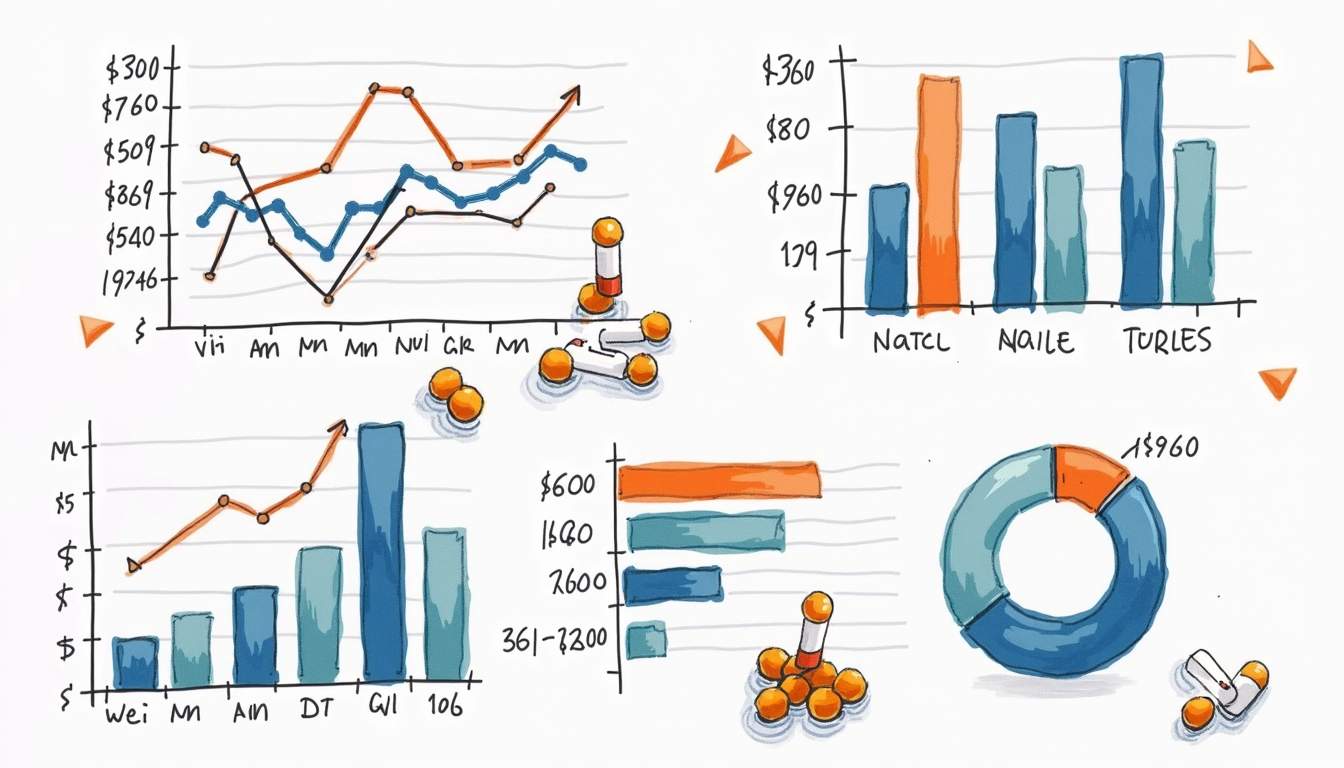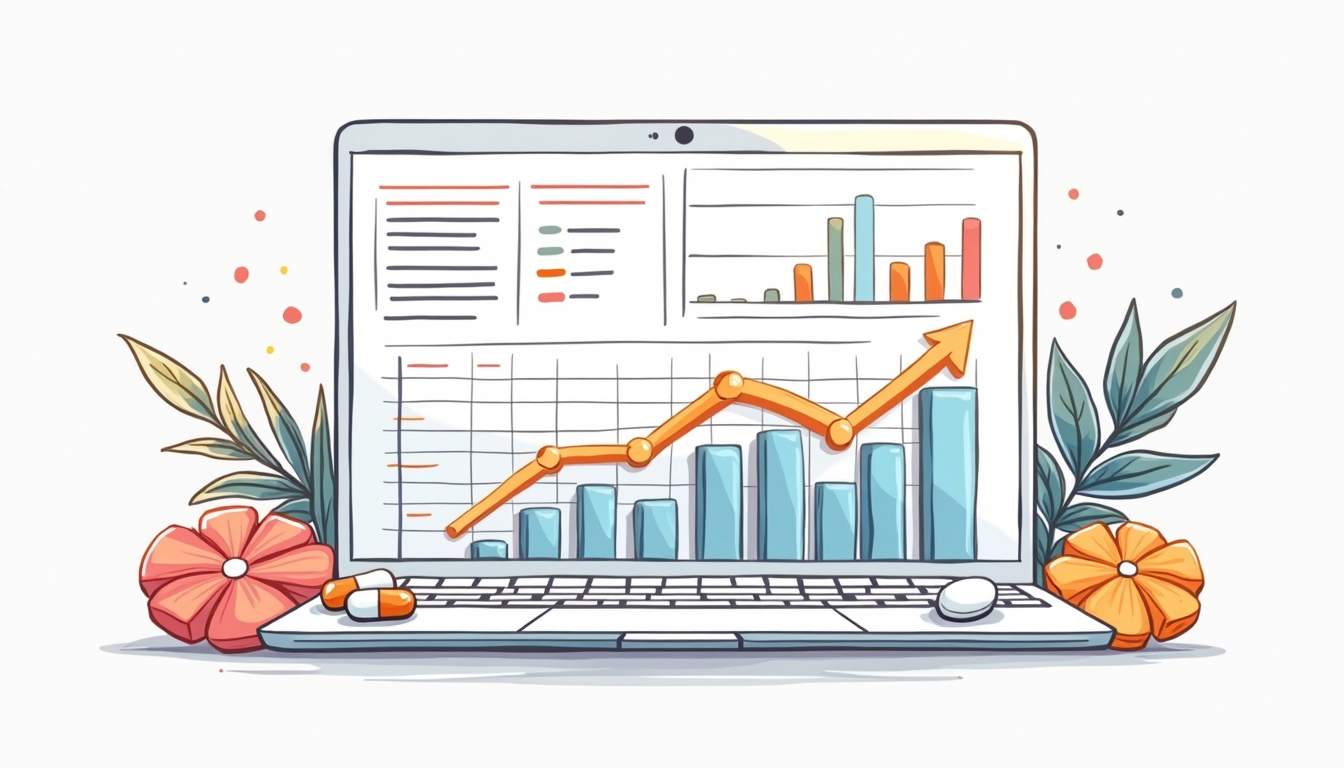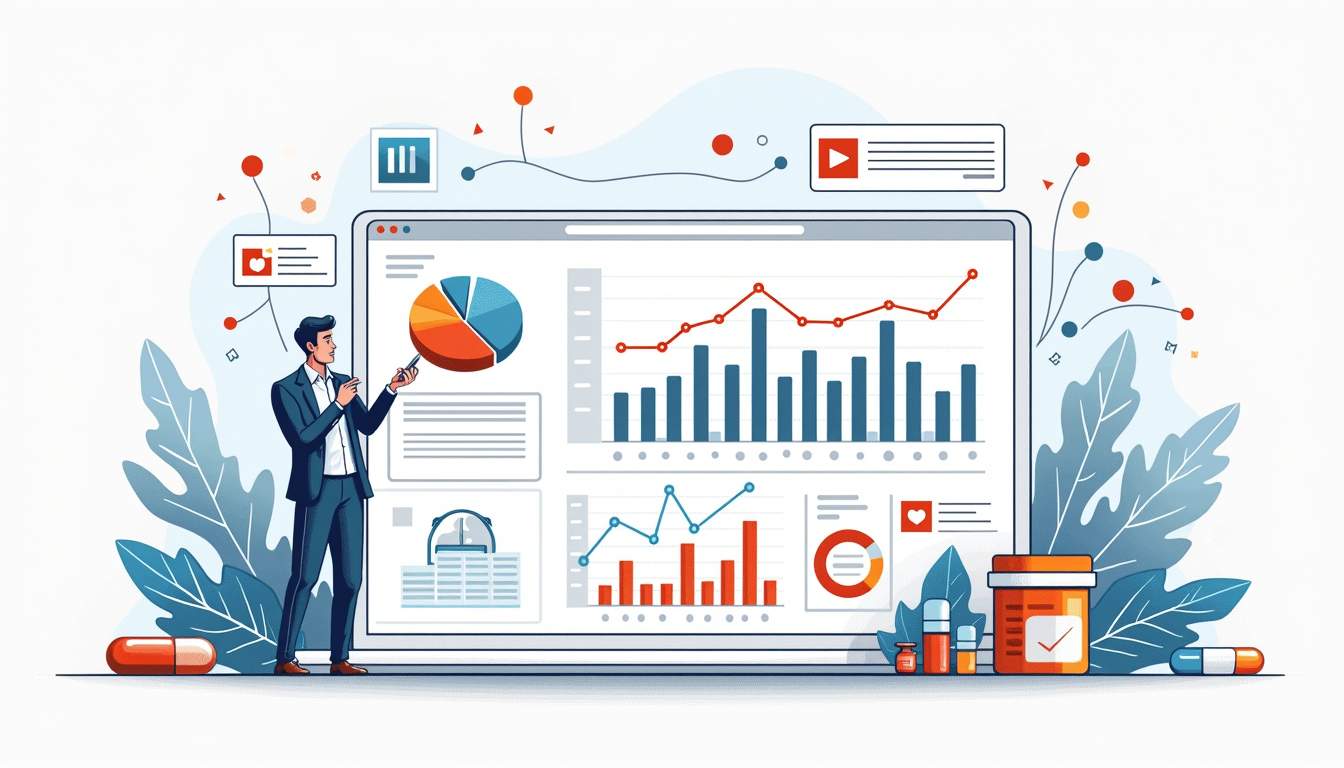In the rapidly evolving digital landscape, LinkedIn has emerged as a paramount platform for advertising pharmaceutical solutions. The unique professional demographic of LinkedIn allows companies to target specific audiences with precision. However, businesses must understand the cost structures involved in advertising on this platform to make informed decisions. This article delves into the various aspects of LinkedIn advertising, focusing on costs, budget allocation, and strategies to maximize return on investment (ROI).
Understanding LinkedIn Advertising
LinkedIn advertising is a powerful tool for marketers in the pharmaceutical industry. It facilitates the promotion of products, services, and brand messages to a professional audience. The platform offers several ad formats, including sponsored content, sponsored InMail, and text ads, each designed to meet the distinct needs of advertisers.
Basics of LinkedIn Advertising
The foundation of advertising on LinkedIn revolves around understanding its various ad formats and targeting capabilities. Sponsored content enables businesses to promote posts that appear in users’ feeds, whereas sponsored InMail allows direct messaging to users’ LinkedIn inboxes. Text ads, displayed on the sidebar, offer a more traditional approach to online advertising.
Leveraging LinkedIn’s advanced targeting options can further enhance ad effectiveness. Businesses can refine their audience based on criteria such as job titles, industries, geographical locations, and even company sizes. This specificity is crucial for pharmaceutical companies aiming to reach healthcare professionals and decision-makers.
Additionally, LinkedIn’s robust analytics tools provide insights into ad performance, allowing marketers to track engagement metrics and optimize campaigns in real-time. This data-driven approach ensures that advertising strategies can be adjusted swiftly to maximize return on investment, making it an invaluable resource for pharmaceutical marketers seeking to fine-tune their outreach efforts.
Importance of LinkedIn for Pharmaceutical Advertising
LinkedIn’s professional-oriented environment makes it particularly advantageous for pharmaceutical companies. The platform provides a unique opportunity to engage with healthcare professionals, researchers, and industry leaders, enabling tailored marketing efforts that resonate with the right audience.
Moreover, the ability to share high-quality content, such as whitepapers and case studies, can establish credibility and thought leadership in the field. This positions pharmaceutical brands as knowledgeable players in the industry, fostering trust among potential clients and partners.
In addition to content sharing, LinkedIn also allows for the creation of specialized groups and forums where industry professionals can discuss trends, challenges, and innovations. By participating in these discussions, pharmaceutical companies can not only promote their products but also gain valuable insights into the needs and concerns of their target audience. Engaging in these conversations can lead to meaningful connections and collaborations, further enhancing a brand’s reputation and reach within the healthcare community.
Cost Factors of LinkedIn Advertising
While the effectiveness of LinkedIn advertising is well-established, understanding the cost elements is essential for any campaign. Costs can vary widely based on several factors, including ad format, bidding strategy, and target audience.

Pay-Per-Click (PPC) Advertising on LinkedIn
PPC is a common pricing model used in LinkedIn advertising. Advertisers pay each time a user clicks on their ad. The competitive landscape of pharmaceutical advertising can influence click costs; more sought-after audiences may yield higher CPC (cost per click) rates.
On average, the CPC for LinkedIn ranges from $2 to $6, depending on the ad’s relevance and the targeting options chosen. Companies need to establish a balance between budget constraints and the desire to reach a highly specific audience. Additionally, factors such as ad quality and relevance scores play a crucial role in determining CPC. A well-crafted ad that resonates with the target demographic can lower costs while maximizing click-through rates, making it essential for advertisers to invest time in creating compelling content.
Sponsored Content Costs
Sponsored content on LinkedIn operates based on a bidding system, where advertisers can set daily or total budgets. The costs typically range from $10 to $15 per 1,000 impressions, allowing for tailored spending to align with campaign objectives.
It is also essential to monitor performance metrics such as engagement and reach to evaluate whether these costs yield adequate returns. By analyzing these metrics, businesses can refine their strategies and allocate resources effectively. Furthermore, experimenting with different types of content—such as videos, articles, or infographics—can provide insights into what resonates best with the audience, potentially leading to improved engagement and lower costs over time.
InMail Advertising Costs
Sponsored InMail is often more expensive than other ad formats due to its personalized approach. Advertisers are charged based on the number of messages sent, with costs typically ranging from $0.30 to $1.00 per InMail. This format is valuable for reaching key decision-makers directly and can significantly enhance engagement rates.
Given the elevated costs associated with InMail, businesses should reserve this approach for high-importance campaigns or particular target segments to maximize value. Moreover, crafting a compelling subject line and personalized message can greatly improve open rates and responses. Understanding the timing of sending these messages—such as avoiding weekends or holidays—can also influence the effectiveness of InMail campaigns, ensuring that the right audience receives the message at the right time for optimal engagement.
Setting Up a Budget for LinkedIn Advertising
Establishing a budget for LinkedIn advertising is a crucial step that warrants careful consideration and planning. Without a clear direction, spending can spiral out of control, leading to underwhelming results.

Determining Your Advertising Goals
Before allocating funds, it is essential to identify what your advertising goals are. Whether it’s brand awareness, lead generation, or driving website traffic, clear objectives will guide budget decisions and campaign structures.
Understanding these goals will also assist in selecting the appropriate ad formats that align with what you aim to achieve. For instance, lead generation campaigns might prioritize sponsored content with strong calls to action, while awareness campaigns may focus on high-visibility impressions. Additionally, setting specific key performance indicators (KPIs) for each goal can provide a clearer framework for evaluating success and making informed adjustments throughout the campaign.
Allocating Funds for Different Ad Types
Once advertising goals are established, funds should be allocated based on the anticipated effectiveness of different ad types. Sponsored content may require a larger portion of the budget due to its potential reach, whereas InMail campaigns might necessitate a separate allocation due to their higher costs.
Confidence in allocating funds can come from reviewing past campaign performances. Analyzing which ad types performed best in previous efforts will provide insights into where to invest in future campaigns. Furthermore, it’s beneficial to consider seasonal trends and industry benchmarks, as certain times of the year may yield higher engagement rates or conversion opportunities, allowing for more strategic budget allocation.
Monitoring and Adjusting Your Budget
Once your advertising campaign is underway, continuous monitoring is vital. Utilizing LinkedIn’s analytics tools can help track performance metrics critical to understanding your campaign’s success.
Regularly revisiting and adjusting your budget based on the performance data will ensure that you make the most of your investment. If a certain ad type is performing exceptionally well, consider reallocating more funds to that type to amplify results. Additionally, don’t overlook the importance of A/B testing different ad creatives and targeting options; this can provide valuable insights into which combinations yield the best ROI, allowing for more informed budget adjustments over time. Engaging with your audience through comments and messages can also provide qualitative data that complements the quantitative metrics, offering a fuller picture of your campaign’s impact.
Maximizing ROI on LinkedIn Pharmaceutical Ads
To ensure that your advertising efforts yield a substantial return on investment, implementation of strategic measures is necessary. Identifying and engaging the right audience is paramount.

Targeting the Right Audience
The efficacy of your LinkedIn ads significantly hinges on targeting the appropriate audience. Leveraging LinkedIn’s robust targeting features allows pharmaceutical businesses to connect with healthcare professionals, researchers, and industry influencers likely to resonate with their products.
Consider using a combination of demographic information and behavioral data to refine your targeting. This ensures that advertisements reach individuals with specific interests or job roles relevant to your pharmaceutical solutions. Additionally, utilizing LinkedIn’s audience insights can help you understand the professional backgrounds of your audience, enabling you to tailor your messaging and approach to meet their specific needs and preferences. This level of personalization can significantly enhance the effectiveness of your campaigns.
Creating Engaging Ad Content
Compelling ad content is critical in capturing the attention of LinkedIn users. Focus on creating high-quality, informative materials that provide value to your audience, such as industry insights or actionable strategies.
The creative aspect of your ads should reflect the professionalism of the pharmaceutical industry while also being visually appealing. Employing well-structured messages and clear calls to action can enhance engagement rates significantly. Consider incorporating multimedia elements such as videos or infographics, which can convey complex information in a more digestible format. Storytelling can also be a powerful tool; sharing case studies or testimonials can create a connection with your audience, illustrating the real-world impact of your products and fostering trust.
Utilizing LinkedIn’s Analytics Tools
Finally, never underestimate the power of data analytics. LinkedIn’s analytical tools provide valuable insights into how your ads are performing through engagement metrics such as clicks, impressions, and conversions.
By continuously analyzing this data, pharmaceutical companies can identify trends, refine campaigns, and ultimately optimize their advertising strategy to improve ROI. The key lies in being adaptable and responsive to the data collected. Additionally, A/B testing different ad formats and messaging can reveal what resonates most with your audience, allowing for more informed decision-making. Regularly revisiting your analytics not only helps in fine-tuning current campaigns but also aids in planning future strategies, ensuring that your advertising efforts remain relevant and effective in a rapidly evolving market.